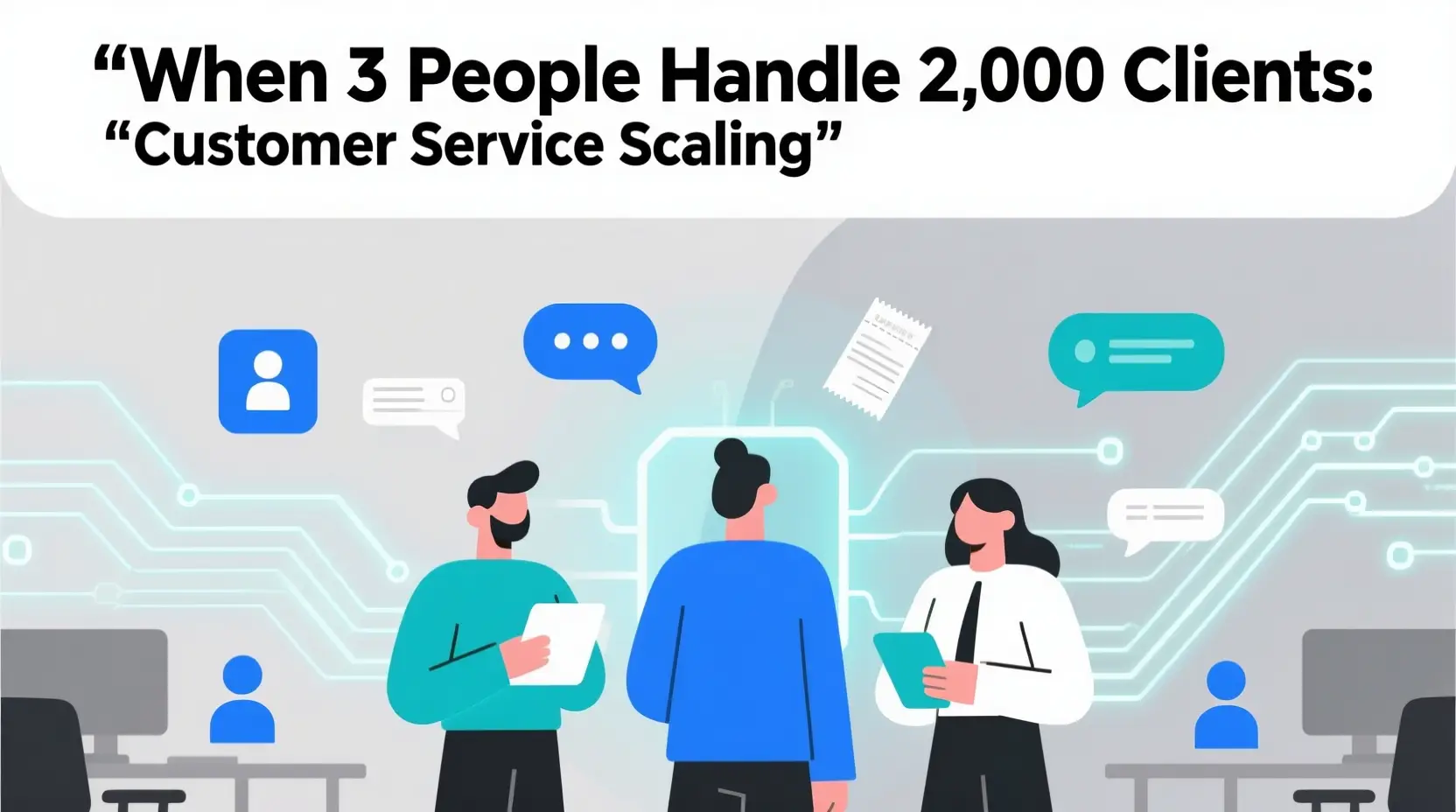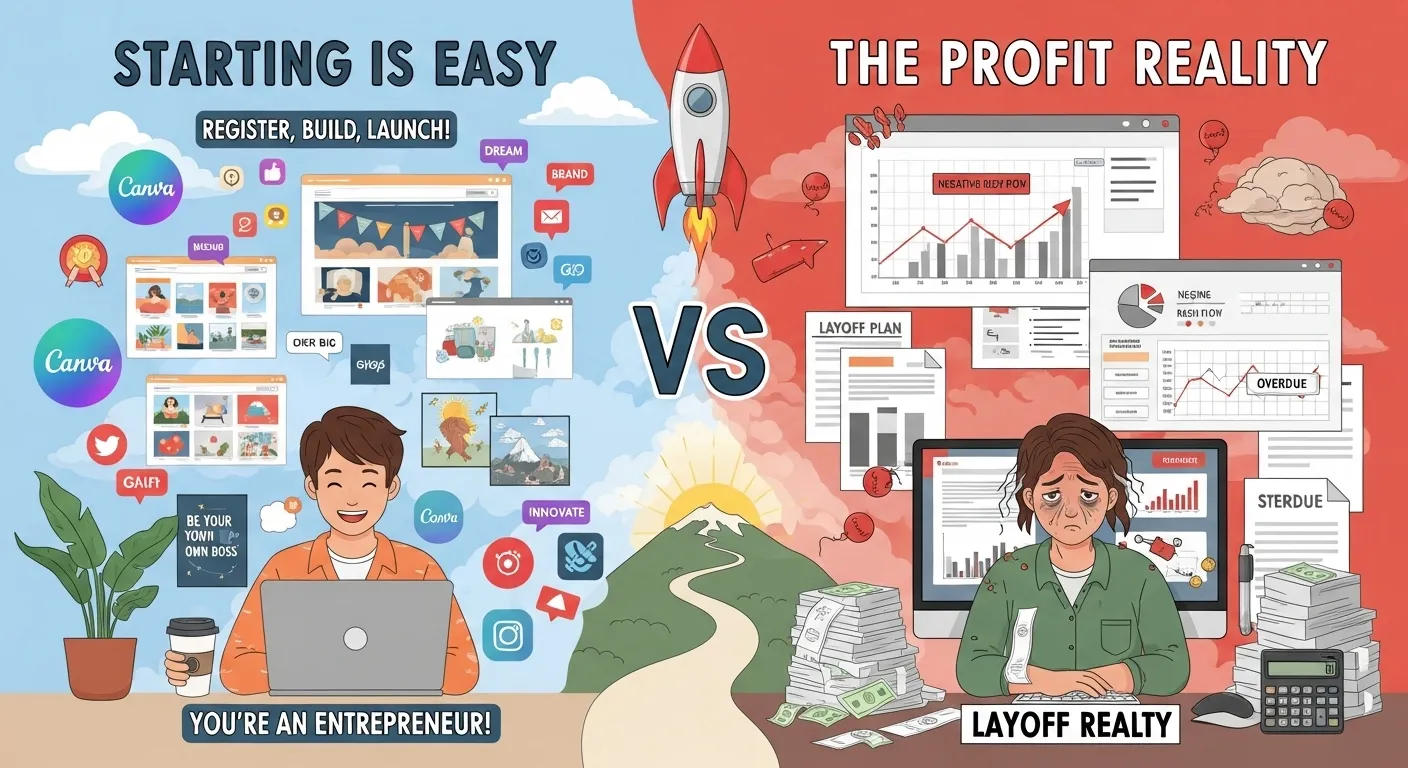The Impossible Math of Small Team Customer Service
A frustrated customer service representative recently shared their daily reality on Reddit: three people managing support for over 2,000 clients, fielding constant complaints about unanswered phones and accusations of being “out to lunch” when they’re simply on calls with other customers. The post struck a nerve, generating hundreds of responses from service professionals facing identical challenges.
This scenario exposes a fundamental scaling problem plaguing growing businesses: customer expectations for immediate phone support that simply doesn’t align with the mathematics of small team operations. When every customer believes they deserve instant access, the gap between expectation and reality creates friction that damages relationships and burns out staff.
The implications extend far beyond frustrated voicemails. Businesses trapped in this cycle face mounting pressure to hire more phone support staff while customers increasingly demand immediate, personalized attention. For ecommerce companies especially, this traditional support model becomes a bottleneck that limits growth and creates operational inefficiencies that directly impact profitability.
Market Analysis: The Customer Service Scaling Crisis
The Expectation Inflation Problem
Customer expectations for service response times have compressed dramatically over the past decade. Research from Salesforce shows that 83% of customers now expect immediate engagement when contacting a company, up from 64% in 2019. Yet the average small business still operates with 2-5 person support teams trying to serve hundreds or thousands of customers.
Key statistics revealing the scale of this challenge:
- Response Time Expectations: 64% of customers expect responses within one hour during business hours
- Phone Answer Expectations: 78% expect calls to be answered within three rings
- Escalation Triggers: 47% will leave negative reviews if calls aren’t answered promptly
- Cost Impact: Small businesses spend 67% more per customer interaction through phone support compared to digital channels
The Resource Allocation Dilemma
The Reddit post highlights a critical business challenge: small teams are forced into reactive, interrupt-driven work patterns that prevent strategic customer relationship building. When three people handle 2,000 clients primarily through phone support, every interaction becomes transactional rather than relationship-focused.
Resource allocation breakdown for typical small teams:
- 80% of time: Reactive phone support and email responses
- 15% of time: Administrative tasks and follow-up
- 5% of time: Proactive customer relationship building
This allocation creates a cycle where teams are perpetually behind, customers feel underserved, and business growth is constrained by support capacity.
Industry Impact Analysis
The scaling challenge affects different business types disproportionately:
Service-Based Businesses: Face the highest pressure for immediate phone availability, as customers often have urgent, situation-specific needs that require real-time consultation.
E-commerce Operations: Experience seasonal spikes that overwhelm small teams, leading to customer acquisition losses during peak sales periods.
B2B Companies: Deal with complex, high-value customer relationships where poor responsiveness can result in significant revenue loss.
Professional Services: Must balance immediate accessibility with billable hour optimization, creating constant tension between service quality and profitability.
Strategic Solutions for Scaling Customer Service
Channel Diversification Strategy
Rather than adding more phone support staff, forward-thinking businesses are implementing channel diversification that matches communication preferences to customer needs and business efficiency.
Tier 1: Self-Service Foundation
- Comprehensive FAQ databases addressing 70% of common inquiries
- Video tutorials for complex processes
- Automated order tracking and status updates
- Interactive troubleshooting guides
Tier 2: Asynchronous Digital Support
- Email support with guaranteed response times
- Live chat during peak hours
- Social media monitoring and response
- Customer portal for account management
Tier 3: Scheduled Phone Consultations
- Appointment-based phone support for complex issues
- Callback systems to eliminate hold times
- Dedicated account management for high-value customers
- Emergency hotline for truly urgent situations
Technology-Enhanced Efficiency
Modern customer service tools can multiply small team effectiveness without proportional cost increases:
AI-Powered Response Systems: Handle routine inquiries automatically while escalating complex issues to human agents with full context.
Intelligent Call Routing: Direct calls to the most appropriate team member based on customer history and inquiry type.
Predictive Analytics: Identify potential issues before customers need to contact support, enabling proactive outreach.
Unified Communication Platforms: Manage phone, email, chat, and social media interactions from single interfaces to reduce context switching.
The Conversational Commerce Alternative
The most innovative approach involves shifting from reactive support to proactive conversational commerce experiences that prevent many support needs while increasing customer satisfaction and sales.
Instead of customers calling with questions about products, sizing, or functionality, conversational commerce enables:
- Real-time product demonstrations during the shopping process
- Interactive consultations that address concerns before purchase
- Personalized shopping assistance that reduces returns and exchanges
- Proactive engagement that builds relationships rather than simply resolving issues
This approach transforms customer service from a cost center into a revenue driver while reducing the volume of traditional support interactions.
Implementation Framework for Small Teams
Phase 1: Immediate Relief (30 Days)
Communication Expectation Management
- Update voicemail messages with realistic response times
- Implement email auto-responders with clear timelines
- Add website messaging about preferred contact methods
- Create urgency classification system for different inquiry types
Quick Win Automation
- Set up automated responses for common questions
- Implement basic chatbot for frequently asked questions
- Create callback request system to eliminate phone tag
- Establish social media monitoring for customer mentions
Phase 2: Strategic Restructuring (90 Days)
Channel Optimization
- Analyze inquiry patterns to identify automation opportunities
- Implement tiered support system based on complexity
- Create appointment scheduling for complex consultations
- Develop self-service resources for routine requests
Team Workflow Enhancement
- Establish designated phone-free work blocks for proactive tasks
- Create escalation procedures that preserve team efficiency
- Implement customer history tracking for context continuity
- Design performance metrics that balance efficiency with quality
Phase 3: Growth-Ready Scaling (6 Months)
Proactive Customer Engagement
- Develop customer success programs that prevent issues
- Create educational content that reduces support volume
- Implement feedback loops that identify systemic problems
- Build community resources where customers help each other
Revenue-Generating Support
- Transform support interactions into sales opportunities
- Develop upselling and cross-selling protocols
- Create loyalty programs that reward low-maintenance customers
- Implement customer advocacy programs
Measuring Success in Scaled Customer Service
Traditional Metrics Evolution
Moving beyond simple response time and resolution metrics to measure true business impact:
Customer Effort Score (CES): Measures how easy customers find it to get their issues resolved across all channels.
First Contact Resolution Rate: Tracks the percentage of issues resolved without customer follow-up, indicating both efficiency and effectiveness.
Customer Satisfaction by Channel: Identifies which communication methods deliver the best experience for different inquiry types.
Support Cost per Customer: Monitors the total cost of serving each customer across their lifetime, including all support interactions.
Advanced Performance Indicators
Proactive Engagement Impact: Measures how preventive customer outreach reduces reactive support volume.
Revenue per Support Interaction: Tracks how support conversations contribute to sales, upselling, and customer lifetime value.
Customer Advocacy Generation: Monitors how positive support experiences translate into referrals and testimonials.
Team Satisfaction and Retention: Ensures that efficiency improvements don’t come at the expense of employee wellbeing.
Future-Proofing Your Customer Service Strategy
Technology Integration Roadmap
Immediate Technology Adoption
- Cloud-based phone systems with intelligent routing
- Integrated communication platforms combining multiple channels
- Basic AI chatbots for routine inquiry handling
- Customer relationship management systems with interaction history
Advanced Technology Evolution
- Predictive analytics for proactive customer outreach
- Voice analysis for emotional sentiment detection
- Automated scheduling and workflow optimization
- Integration between support systems and sales/marketing platforms
Building Sustainable Growth
The businesses that successfully scale customer service understand that the goal isn’t just handling more interactions—it’s creating systems that improve customer relationships while enabling team effectiveness.
Key principles for sustainable scaling:
Prevention Over Reaction: Invest in reducing the need for support interactions through better products, clearer communication, and proactive customer success.
Quality Over Quantity: Focus on resolving issues completely rather than just quickly, reducing repeat contacts and improving satisfaction.
Integration Over Isolation: Connect customer service with sales, marketing, and product development to create cohesive customer experiences.
Technology as Amplifier: Use technology to enhance human capabilities rather than replace human judgment and empathy.
Conclusion: From Survival to Strategic Advantage
The frustrated Reddit post about three people serving 2,000 customers represents a crossroads that many growing businesses face. The traditional approach—hiring more phone support staff to handle increased volume—leads to unsustainable cost structures and operational complexity that stifles growth.
The alternative involves reimagining customer service as a strategic capability that prevents problems, creates opportunities, and builds lasting relationships. By implementing channel diversification, technology enhancement, and proactive engagement strategies, small teams can serve larger customer bases more effectively while creating better experiences for everyone involved.
The companies that master this transition don’t just solve the immediate scaling problem—they create competitive advantages that are difficult for competitors to replicate. They build customer loyalty through superior experiences, reduce operational costs through intelligent automation, and generate revenue through support interactions that traditional models treat as pure cost centers.
For customer service leaders facing similar challenges, the path forward involves acknowledging that the old model doesn’t scale, embracing technology as an enabler rather than a replacement for human expertise, and designing systems that serve both customer needs and business objectives.
Book Your Live Demo to discover how conversational commerce can transform your customer service challenges into competitive advantages while reducing support volume and increasing customer satisfaction.



